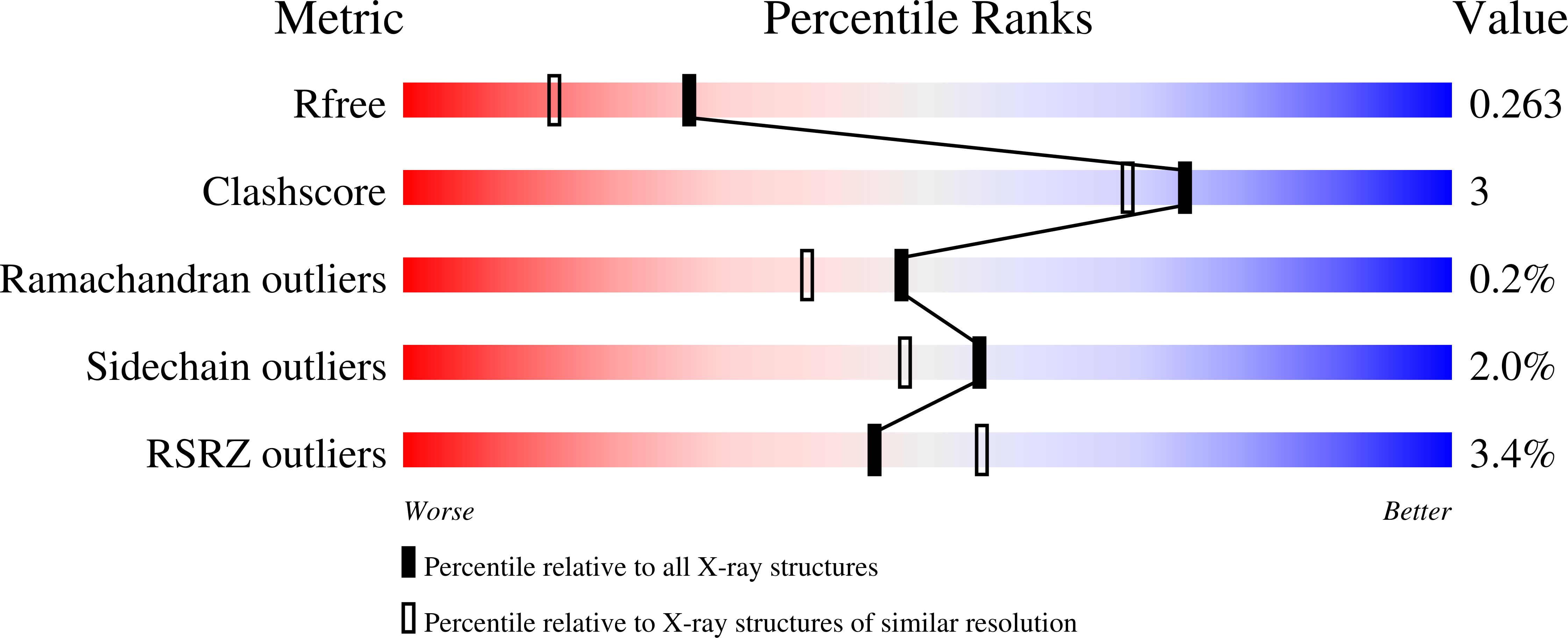Structural mechanism of CCM3 heterodimerization with GCKIII kinases
Zhang, M., Dong, L., Shi, Z., Jiao, S., Zhang, Z., Zhang, W., Liu, G., Chen, C., Feng, M., Hao, Q., Wang, W., Yin, M., Zhao, Y., Zhang, L., Zhou, Z.(2013) Structure 21: 680-688
- PubMed: 23541896
- DOI: https://doi.org/10.1016/j.str.2013.02.015
- Primary Citation of Related Structures:
4GEH - PubMed Abstract:
Mutation of CCM3 causes cerebral cavernous malformations of the vasculature, leading to focal neurological deficits, seizures, and hemorrhagic stroke. CCM3 can heterodimerize with GCKIII kinases (MST3, MST4, and STK25) to regulate cardiovascular development. Here, we provide direct experimental evidence to prove that CCM3 heterodimerizes with GCKIII in a manner structurally resembling the CCM3 homodimerization. Structural comparison revealed the mechanism and critical residues that drive CCM3-GCKIII heterodimerization versus homodimerization. A flexible linker was identified for CCM3, which mediates a large-scale conformational rotation of the FAT domain relative to the dimerization domain. The conformational flip over of FAT domain removes steric locking in the CCM3 homodimer and allows its disassembly and subsequent heterodimerization with GCKIII. CCM3 forms a stable complex with MST4 in vivo to promote cell proliferation and migration synergistically in a manner dependent on MST4 kinase activity. Collectively, our work offers a structural basis for further functional study.
Organizational Affiliation:
State Key Laboratory of Cell Biology, Institute of Biochemistry and Cell Biology, Shanghai Institutes for Biological Sciences, Chinese Academy of Sciences, Shanghai 200031, China.















